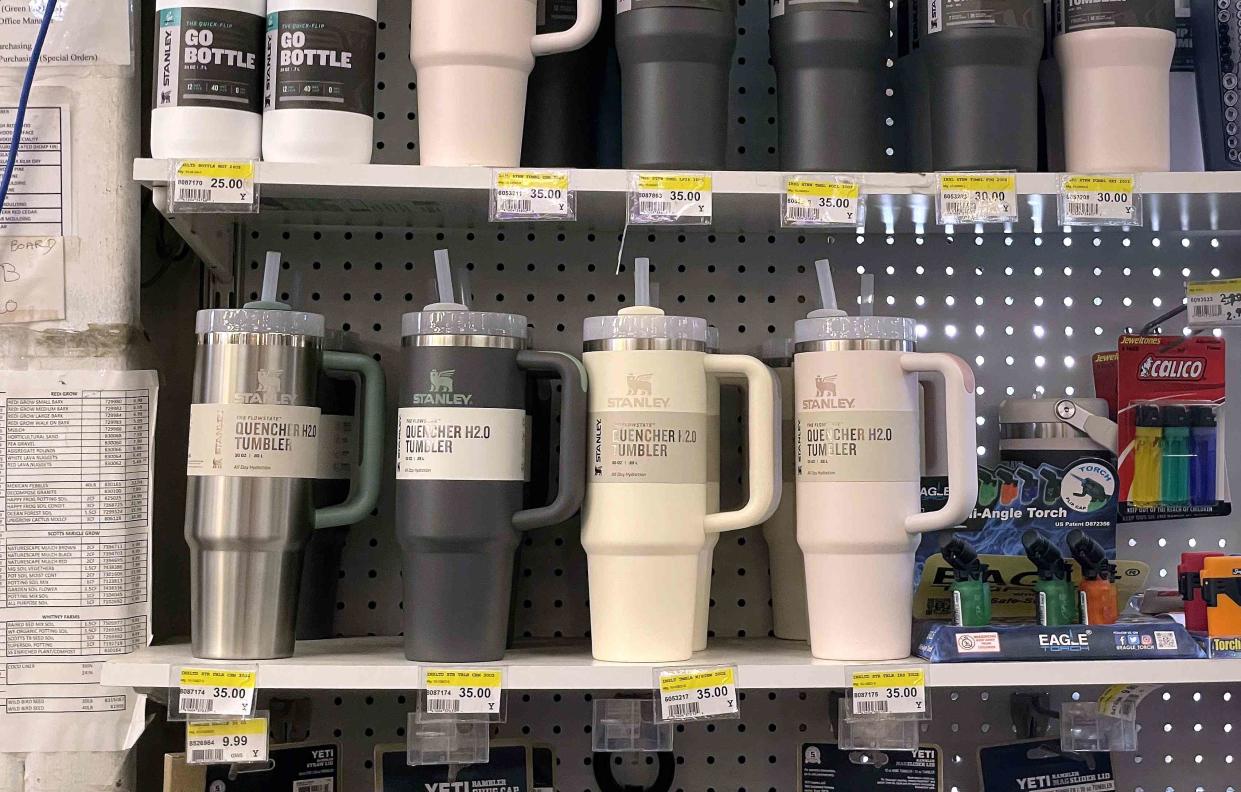Stanley Cups Contain Lead. Are They Still Safe to Use?

Justin Sullivan / Getty Images
Fact checked by Nick Blackmer
Key Takeaways
Stanley said the sealing material used for the vacuum insulation at the base of its products includes some lead, but a stainless steel layer prevents the lead from coming into contact with users.
Experts say Stanley cups are still safe as long as they're not damaged.
Some TikTok users have tested their Stanley cups with home lead tests, but these tests may not be EPA-approved or accurate.
Stanley tumblers, the social media darling water bottle, are steeped in controversy after the company confirmed that lead is used in the manufacturing process.
In a statement, Stanley said the sealing material used for the vacuum insulation at the base of its products includes some lead. However, the material is covered with a stainless steel layer, making it inaccessible to consumers.
“Rest assured that no lead is present on the surface of any Stanley product that comes into contact with the consumer nor the contents of the product,” the statement read.
The lead isn’t coming into contact with liquids or people’s skin as long as the Stanley cup isn’t damaged, according to Kelly Krisna Johnson-Arbor, MD, a medical toxicologist at MedStar Georgetown University Hospital.
"If people have the Stanley cups that are intact and not damaged, and not falling apart, this is really not an issue,” Johnson-Arbor told Verywell.
Lead is a toxic metal that can cause serious health problems like brain and nervous system damage in children or high blood pressure, heart issues, and kidney damage in adults.
Related: Your Vintage Dishes and Pottery May Cause Lead Poisoning
Is It Safe to Put Your Stanley in the Dishwasher?
A 2018 case report co-authored by Johnson-Arbor found that a woman was exposed to lead after drinking hot lemon water from a ceramic mug. The combination of heat and acidity caused the lead glaze to break down.
Will the high heat in a dishwasher cause the lead to leach from a Stanely tumbler? According to the company, Stanley tumblers are dishwasher-safe. Putting them in the dishwasher also won’t increase the risk of lead exposure, Johnson-Arbor said.
“There should be no issue with lead leaching out from being in the dishwasher or having a hot beverage in it,” she said. “Even if the lead did leach out, it should be protected by that outer stainless steel layer. So it should not be contaminating your dishwasher, water, or whatever you’re drinking.”
Related: Stanley Cup Lovers: We're Begging You to Wash Your Tumbler
How Reliable Are Home Lead Tests?
Some Stanley users used home lead test kits to swab their cups to test whether they contained lead, but these tests aren’t always accurate.
“In the videos that I watched, people were using lead test kits that I didn’t recognize initially,” Johnson-Arbor said.
The Environmental Protection Agency (EPA) has approved two lead test kits, but these are for detecting lead in paint, she added.
“All of the tests that you can buy on Amazon are not necessarily approved or endorsed by the EPA for being accurate,” Johnson-Arbor said.
If you are worried about lead exposure, your healthcare provider can order a lead poisoning blood test.
“There are limitations to the accuracy of what is on social media. It’s best to talk with your doctor if you have any questions about the presence of lead and its effects on your body,” she said.
Related: Symptoms of Lead Poisoning
Do All Insulated Water Bottles Contain Lead?
Stanley said that it uses an “industry standard pellet” to seal the base cap of the products. Tamara Rubin, an independent advocate for lead poisoning prevention and consumer goods safety, found leaded seals in other stainless steel bottles such as Thermoflask and Takeya.
Hydro Flask—Stanley’s competitor—leaned into the controversy and released a statement explaining that they stopped using lead in their vacuum seal over a decade ago.
If the base cap of your Stanley cup came off due to ordinary use and the seal is exposed, you can submit a claim through the company’s lifetime warranty.
Read Next: CDC Strengthens Lead Poisoning Prevention in Children With New Standards
What This Means For You
The sealing material in Stanley tumblers contains lead, but it’s covered by a stainless steel layer. You shouldn’t have to worry about lead exposure unless the base cap or the seal is damaged.
Read the original article on Verywell Health.

